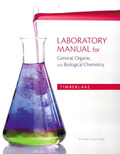
a.
To determine:
The type of transport (passive diffusion, facilitated diffusion, or active diffusion) will occur in oxygen.
Introduction:
Passive diffusion is the way in which movement of ions, molecule substances across the membrane without the need of energy. Facilitated diffusion is the process of spontaneous passive transport of molecules or ions across the membrane. Active diffusion is the transport way in movement of molecules across a membrane from the region of higher concentration to lower concentration so it required energy for this transportation.
b.
To determine:
The type of transport (passive diffusion, facilitated diffusion, or active diffusion) will occur in glucose, no energy required.
Introduction:
Passive diffusion is the way in which movement of ions, molecule substances across the membrane without the need of energy. Facilitated diffusion is the process of spontaneous passive transport of molecules or ions across the membrane. Active diffusion is the transport way in movement of molecules across a membrane from the region of higher concentration to lower concentration so it required energy for this transportation.
c.
To determine:
The type of transport (passive diffusion, facilitated diffusion, or active diffusion) will occur in
Introduction:
Passive diffusion is the way in which movement of ions, molecule substances across the membrane without the need of energy. Facilitated diffusion is the process of spontaneous passive transport of molecules or ions across the membrane. Active diffusion is the transport way in movement of molecules across a membrane from the region of higher concentration to lower concentration so it required energy for this transportation.
d.
To determine:
The type of transport (passive diffusion, facilitated diffusion, or active diffusion) will occur in
Introduction:
Passive diffusion is the way in which movement of ions, molecule substances across the membrane without the need of energy. Facilitated diffusion is the process of spontaneous passive transport of molecules or ions across the membrane. Active diffusion is the transport way in movement of molecules across a membrane from the region of higher concentration to lower concentration so it required energy for this transportation.
Want to see the full answer?
Check out a sample textbook solution
Chapter 8 Solutions
EBK LABORATORY MANUAL FOR GENERAL, ORGA
- 35.What is meant by the phrase "like dissolves like"? A. Solutes will dissolve in solvents of similar polarity. B. Solutes will dissolve in solvents of opposite polarity. C. Solutes will dissolve in solvents of similar molar mass. D. Solutes will dissolve in solvents regardless of polarity. E. Solvents will dissolve in solutes of opposite polarity.arrow_forwardWhat is the molality (m) of a 36.45% (by weight) solution of HCl in water A. 0.0157 m B. 0.0274 m C. 63.55 m D. 1.00 m E. 15.74 marrow_forwardHow many milliliters of a 2.5 M NaCl solution would be needed to prepare each solution? a. 25 mL of a 1.0 M solution b. 1.5 L of a 0.75 M solution c. 15 mL of a 0.25 M solution d. 250 mL of a 0.025 M solutionarrow_forward
- A doctor has ordered for a week 0.35 grams of Carvedilol for a patient with high blood pressure. If your stock on hand consists of 25 mg tablets, how many tablets will you need for 1 day's treatment for the patient? QUESTION 13 O a. 2 O b. 14 O C. 7 O d. 20 O e. 1 QUESTION 14arrow_forwardMethanol is a polar solvent and heptane is a nonpolar solvent. In which of these two solvents are each of the following solutes more likely to be soluble?a. KCl, ionic b. Rubbing alcohol, polar c. Gasoline, nonpolar d. NaNO3, ionicarrow_forwardA solution is made by adding 25 mL of benzene to 80 mL of toluene. What is the percent by volume of benzene? a. 2.381% b. 2.081% c. 20.81% d. 23.81%arrow_forward
- Chemistry: Matter and ChangeChemistryISBN:9780078746376Author:Dinah Zike, Laurel Dingrando, Nicholas Hainen, Cheryl WistromPublisher:Glencoe/McGraw-Hill School Pub Co
 Chemistry for Today: General, Organic, and Bioche...ChemistryISBN:9781305960060Author:Spencer L. Seager, Michael R. Slabaugh, Maren S. HansenPublisher:Cengage Learning
Chemistry for Today: General, Organic, and Bioche...ChemistryISBN:9781305960060Author:Spencer L. Seager, Michael R. Slabaugh, Maren S. HansenPublisher:Cengage Learning
 Chemistry & Chemical ReactivityChemistryISBN:9781337399074Author:John C. Kotz, Paul M. Treichel, John Townsend, David TreichelPublisher:Cengage Learning
Chemistry & Chemical ReactivityChemistryISBN:9781337399074Author:John C. Kotz, Paul M. Treichel, John Townsend, David TreichelPublisher:Cengage Learning Chemistry & Chemical ReactivityChemistryISBN:9781133949640Author:John C. Kotz, Paul M. Treichel, John Townsend, David TreichelPublisher:Cengage Learning
Chemistry & Chemical ReactivityChemistryISBN:9781133949640Author:John C. Kotz, Paul M. Treichel, John Townsend, David TreichelPublisher:Cengage Learning





